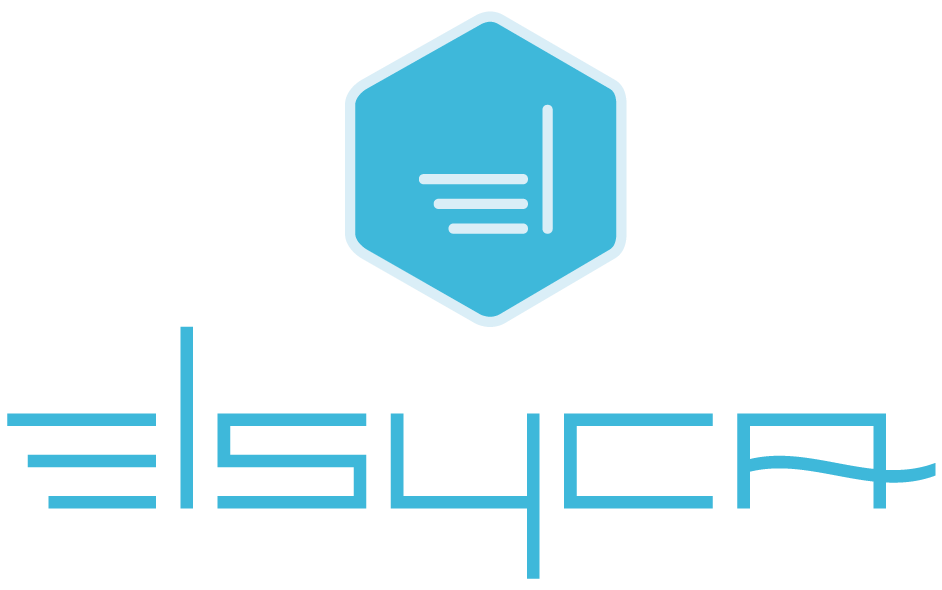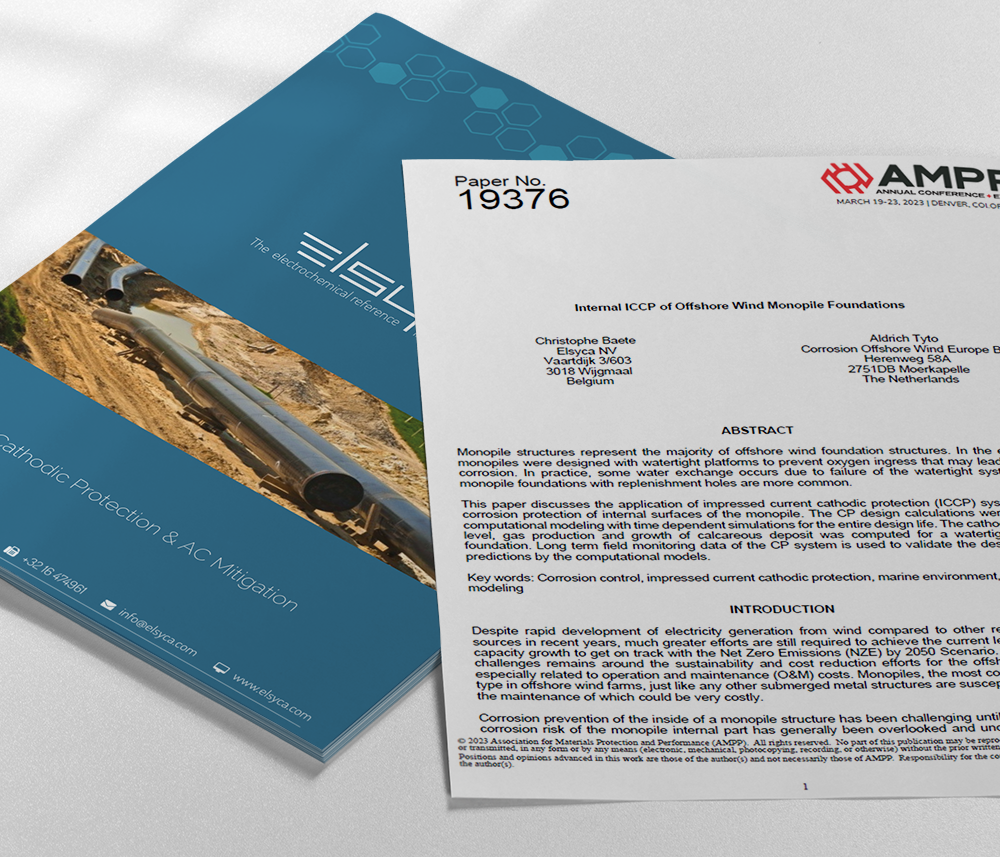
Internal ICCP of Offshore Wind Monopile Foundations (AMPP 2023)
AMPP 2023 Conference Paper

Internal ICCP of Offshore Wind Monopile Foundations (AMPP 2023)
Christophe Baete, Elsyca NV.; Aldrich Tyto, Corrosion Offshore Wind Europe BV.
Paper presented at the AMPP Annual Conference + Expo, Denver, CO, USA, March 2023
Paper Number: AMPP-2023-19376
Abstract
Monopile structures represent the majority of offshore wind foundation structures. In the early days, monopiles were designed with watertight platforms to prevent oxygen ingress that may lead to internal corrosion. In practice, some water exchange occurs due to failure of the watertight system. Today monopile foundations with replenishment holes are more common.
This paper discusses the application of impressed current cathodic protection (ICCP) systems for the corrosion protection of internal surfaces of the monopile. The CP design calculations were verified by computational modeling with time dependent simulations for the entire design life. The cathodic protection level, gas production and growth of calcareous deposit was computed for a watertight and open foundation. Long term field monitoring data of the CP system is used to validate the design rules and predictions by the computational models.
Introduction
Despite rapid development of electricity generation from wind compared to other renewable power sources in recent years, much greater efforts are still required to achieve the current level of sustained capacity growth to get on track with the Net Zero Emissions (NZE) by 2050 Scenario. One of the main challenges remains around the sustainability and cost reduction efforts for the offshore wind sector, especially related to operation and maintenance (O&M) costs. Monopiles, the most common foundation type in offshore wind farms, just like any other submerged metal structures are susceptible to corrosion, the maintenance of which could be very costly.
Corrosion prevention of the inside of a monopile structure has been challenging until today [1], [2]. The corrosion risk of the monopile internal part has generally been overlooked and underestimated in the past, due to the watertight design of the first monopile foundation structures where corrosion from oxygen
ingress was supposed to be prevented. However, due to leakage of the cable entry sealing at the bottom of the structure, oxygen rich water ingressed inside the structure leading to corrosion [3]. The first cathodic protection systems consisted of AlZnIn sacrificial anodes, but the dissolution of the aluminum led to acidification due to the formation of Al(OH)3 deposits [4],[5],[6]. Zinc sacrificial anodes do not have this side effect, but a much larger mass is required for the same design life. Alternatively, impressed current cathodic protection (ICCP) systems have been applied and have progressively found their way as a long term cost-effective, easy to maintain, and sustainable solution to protect offshore monopiles. Meanwhile, monopile structures nowadays are designed as semi-open structures by introducing water refreshment and venting holes.
